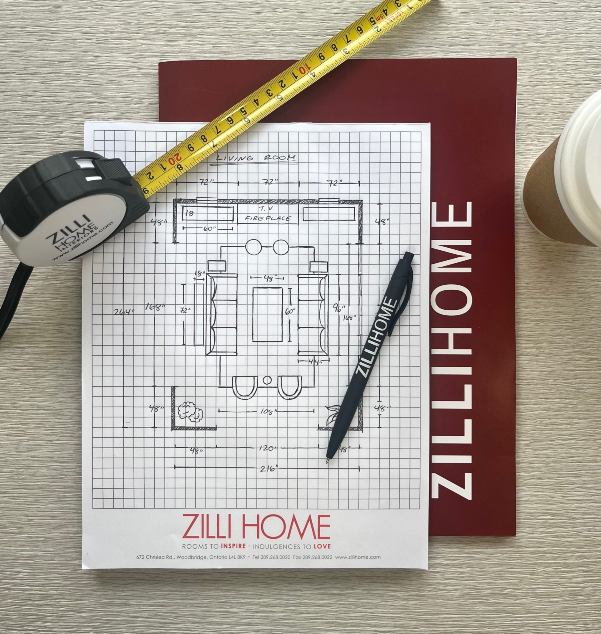Dimensions matter as much as style when choosing furniture, so learn how to measure both your furniture and your space to make informed decisions, and make sure your new furniture will go from the truck and into your home perfectly!
GATHER YOUR TOOLS:
Tape measure: Use a reliable tape measure that can extend to the length of your largest furniture piece.
Paper and pencil: Keep a notepad or paper handy to jot down measurements.
Masking Tape: To help visualize, map out the area where the piece will live
STEP 1: MEASURE + PLAN YOUR SPACE:
Measure your space and the delivery path first so you can look for pieces that will fit your home. Using painter's tape to mark out dimensions on the floor is a great method to visualize furniture in your room.
STEP 2: MEASURE ENTRY POINTS:
It's important to make sure that the piece will fit in all entryways before placing your order. Measure the height and width of every doorway, wall opening, hallway, staircase, and elevator door. It’s also important to measure the clearance length beyond each entry point.
1. Measure the height (H) and width (W) of all doors, wall openings, and hallways.
2. For narrow entryways and corners, also measure the total clearance length between the outside and interior walls, beyond each entry point.
3. Determine the best pathway from outside your home to where the new piece will live.
4. Factor in ceiling height (A), corners (B), low hanging lights (C), stairways (D), banisters (E)
5. The diagonal width (DW) of the package must be less than the height of each entry point (H), as well as the clearance length (C), beyond each entryway. The depth must be less than the width of each entry point.
6. Take notice of unique elements (light fixtures, decorative mouldings, etc.) The diagonal width (DW) must be less than the height (H), as well as the clearance length (C).
It is important to consider the packaged dimensions of each individual piece rather than the assembled dimensions.

UNDERSTANDING DIMENSIONS
Most furniture measurements are calculated from each piece’s widest or tallest point. This means items with an overhang, angle or outward curve are included in the overall dimensions.

WIDTH
When looking at the front of the furniture piece, width is how wide it is from one side to the other (outer edges). This helps determine how much space it takes up and how much room it needs when moving in a straight line.
DEPTH
When looking at the side of the furniture piece, depth is how far it sticks out from front to back (outer edges). If it has an angled back, measure from the widest part for accuracy. This helps you see how far it extends into a room and if it can fit through doors, halls, or stairs.
HEIGHT
When looking at the side of a furniture piece, height is how tall something is from bottom to top. Some things can be made smaller for delivery by removing parts (i.e. legs, handles, sectional pieces etc.). Measure both assembled size and delivery size to see if it fits through doors, halls, or stairs.
DIAGONAL WIDTH
This is the longest measurement between opposite corners. It's important for moving big items around tight corners, stairs, or doors, especially when standing them up to turn.
Choosing furniture that fits your space requires careful measurement and planning. By following the steps outlined and using the right tools, you can ensure a smooth delivery process. With this knowledge, you can make informed decisions and ensure that your new furniture fits perfectly into your home!

